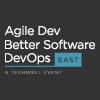 |
Testing In The Dark
Slideshow
Isn’t it amazing? Stakeholders drop software on our desks and expect us to test it—without any requirements, design, or product knowledge whatsoever. About the only clear thing is the absurd and unrealistic deadline. We are expected to bend over backward, spread magic pixie dust, and heroically test quality into a product we have never heard of before. But testing in the dark is not impossible, and as Rob Sabourin shows, it can even be a very valuable and fun experience. Learn strategies to emerge from a murky fog into clear, meaningful quality insights and leverage unlikely sources about what stakeholders care about and what users really need the software to do. Rob introduces you to methods of reconnaissance-style, charter-driven, and session-based exploratory testing and help you provide meaningful estimates to stakeholders with minimal hard information about the software under test.
|
Rob Sabourin
|
 |
To Estimate or Not to Estimate, is that the Question?
Slideshow
Wondering what NoEstimates means in practice, or why you would want to move toward NoEstimates? Perhaps you’ve heard the buzz or read Vasco Duarte’s book. Maybe you simply want to understand how you can spend less time estimating and more time delivering working software...
|
Matthew Phillip
|
|
|
Estimating in Software Development: No Silver Bullets Allowed
Slideshow
What do poker, Greek oracles, an Italian mathematician from the Middle Ages, and the path of hurricanes have in common? Given the title of this presentation, chances are it has something to do with estimation, and you'll have to attend this session to get the full connection. Kent McDonald explores the challenges and realities of trying to estimate software-related knowledge work-analysis, testing, development, and the entire project effort. A major challenge is that there are no guaranteed ways to arrive at perfectly accurate estimates, which not surprisingly is why they are called estimates. Kent introduces and gives you a chance to practice quick and practical estimating techniques that will work in different situations-guesstimating, break it down and add it up, and planning poker.
|
Kent McDonald, Knowledge Bridge Partners
|
|
|
Lessons Learned from Forty-five Years of Software Measurement
Slideshow
Counting is easy. However, what makes measurement really valuable-and really hard to get right-is knowing what to count and what to do with the results. If your organization is mostly tracking resource usage, costs, and schedule data, it is making a big mistake. What about the users? The customers? The overall business strategy? Sharing the lessons he has learned from fighting-and surviving-many software measurement battles, Ed Weller offers a step-by-step approach for implementing a practical and valuable metrics program. After understanding what measures are most important to the business strategy and all stakeholders, the next step is to decide what data supports those measures and how to capture it. With data in hand, you can create simple and informative ways to make the resulting metrics visible and easy to digest. The biggest challenges-avoidance, disbelief, and rationalization-come next.
|
Edward Weller, Integrated Productivity Solutions, LLC
|
|
|
Not an Estimating Problem
Video
In this lightning talk from STAREAST 2011, Dale Emery takes a look at some common issues we encounter when estimating and explains why they aren't actually estimating problems.
|
Dale Emery, DHE
|
|
|
Estimating Business Value Agility focuses on delivering business value to the customers as rapidly as possible. So, how does the team assure the business that it’s delivering the most value possible in the right priority? It’s more than prioritizing user stories or estimating development effort with story points. Through presentation and interactive exercises, Ken Pugh explains how to estimate and track business value throughout an agile project. He presents two methods for quickly estimating business value for features and stories, and shows the relationship between business value estimates and story point estimates. Ken illustrates how to chart business value for iteration reviews and demonstrates what estimates really mean in both dollars and time. On a larger scale, Ken shows business value as a portfolio management tool for prioritizing feature development across many projects.
|
Ken Pugh, Net Objectives
|
|
|
The Impact of Poor Estimating - And How to Fix It The team, running Scrum by-the-book for three months, was continually failing to meet its delivery dates. As a result, trust between the business managers and the team degraded almost to a point-of-no-return. The team, which held bi-weekly retrospectives, could not pinpoint the problems causing its inability to ship. Mitch Lacey was asked to assist the team in finding the root cause of its problems. He analyzed multiple aspects of the project-from individual work items to planning meetings. While multiple issues were identified, one thing stood out above all others--the estimation process used had caused the team to miss its deadlines. Mitch discusses the estimation problems the team was having, how they were discovered and fixed, and the resulting improvement in financial and customer satisfaction.
|
Mitch Lacey, Ascentium Corporation
|
|
|
Agile Development Practices 2007: Agile Development and its Impact on Productivity An agile approach can deliver recognizable value to organizations. Using examples from recent projects, David Garmus demonstrates that software development projects can benefit from using the agile methodology when appropriate. Delivering a project in an organization that is following an agile implementation methodology can be faster and more productive than the same project in an organization that is using the traditional waterfall approach. David provides actual delivery (project performance)
|
David Garmus, David Consulting Group
|
|
|
Empirical Studies of Agile Practices Gone are the religious wars of plan-driven vs. agile software development methodologies and practices. Recent surveys indicate agile practices are being adopted in many software development organizations, with others seriously contemplating making the switch. The question from most organizations now has turned from plan-driven vs. agile to which agile practices they should use in their development process to most improve their business results. The experiences of other organizations that have adopted agile practices help answer this question. Based on her empirical studies of Extreme Programming teams and other agile practices, Laurie Williams shares her views on which agile methods have been most beneficial to industrial teams practicing agile development. Armed with real data, you can implement changes with more confidence that they will add value in your organization.
|
Laurie Williams, University of North Carolina
|
|
|
Test Estimation: A Pain or ... Painless? Agile methodologies may be coming soon to a project near you. Agile software development holds the promise of faster development, less cost, fewer defects, and increased customer value, all while maintaining a sustainable work pace in a high morale environment. As a tester, you may be wondering, "How will agile affect me?" We've all heard stories that agile methodologies have no place for testers. In this presentation, Jean Tabaka changes that perspective. She will highlight the fundamental tenets of agile software development, the project management frameworks that support these tenets, and the engineering disciplines that naturally fit in these frameworks. For some testers, the agile approach can be a jolt to their long-held beliefs of how testing should be done.
|
Lloyd Roden, Grove Consultants
|
